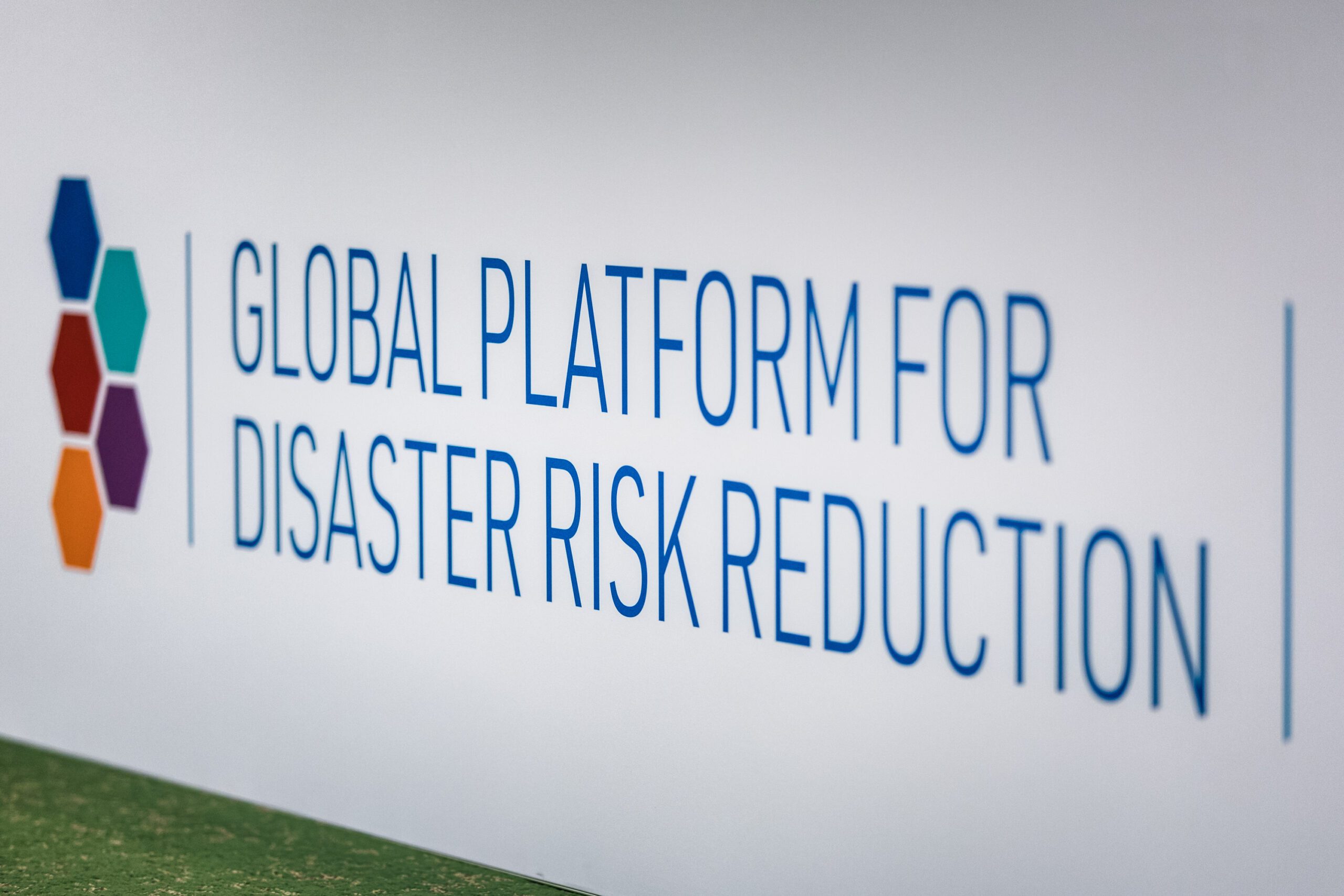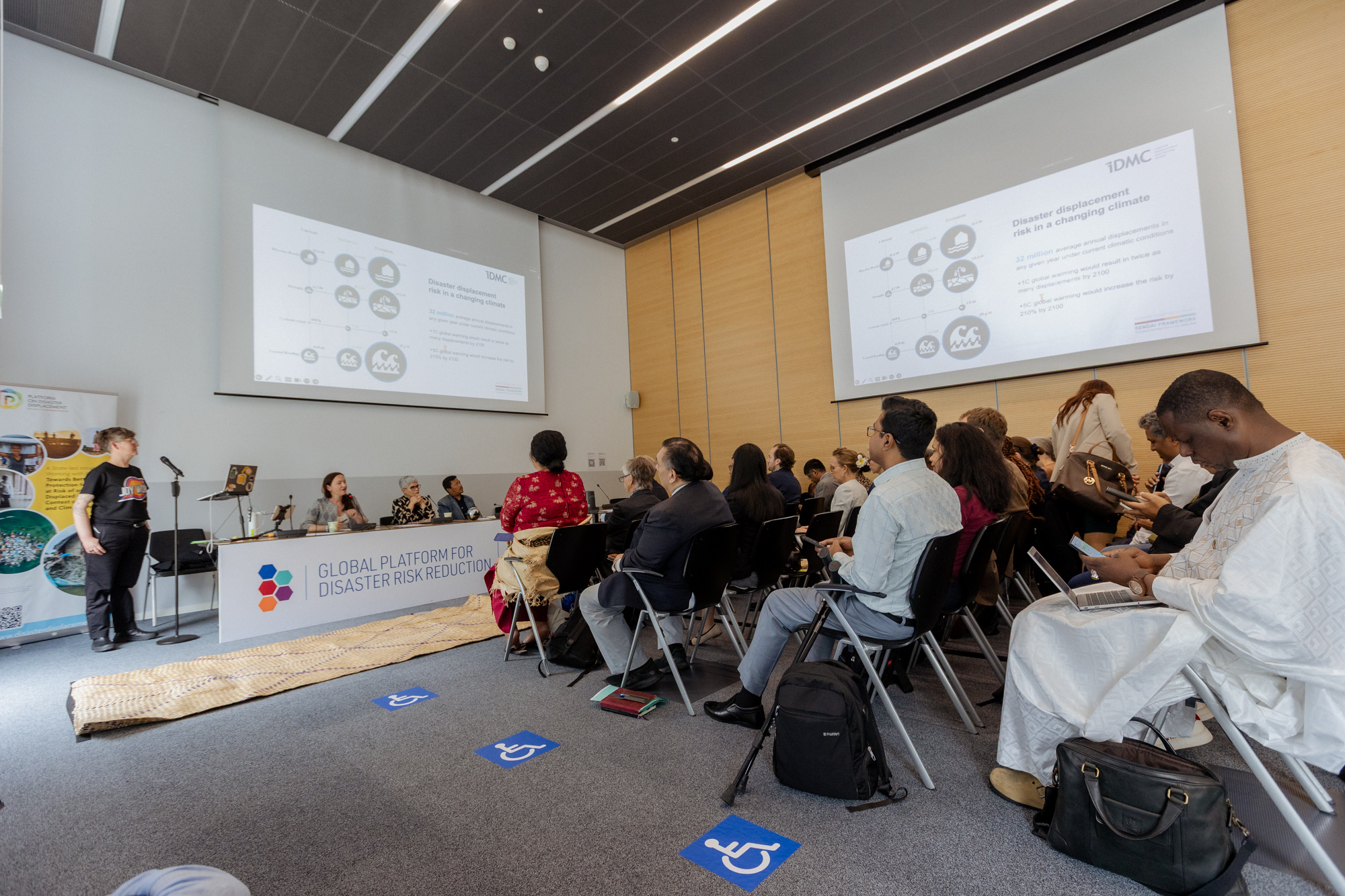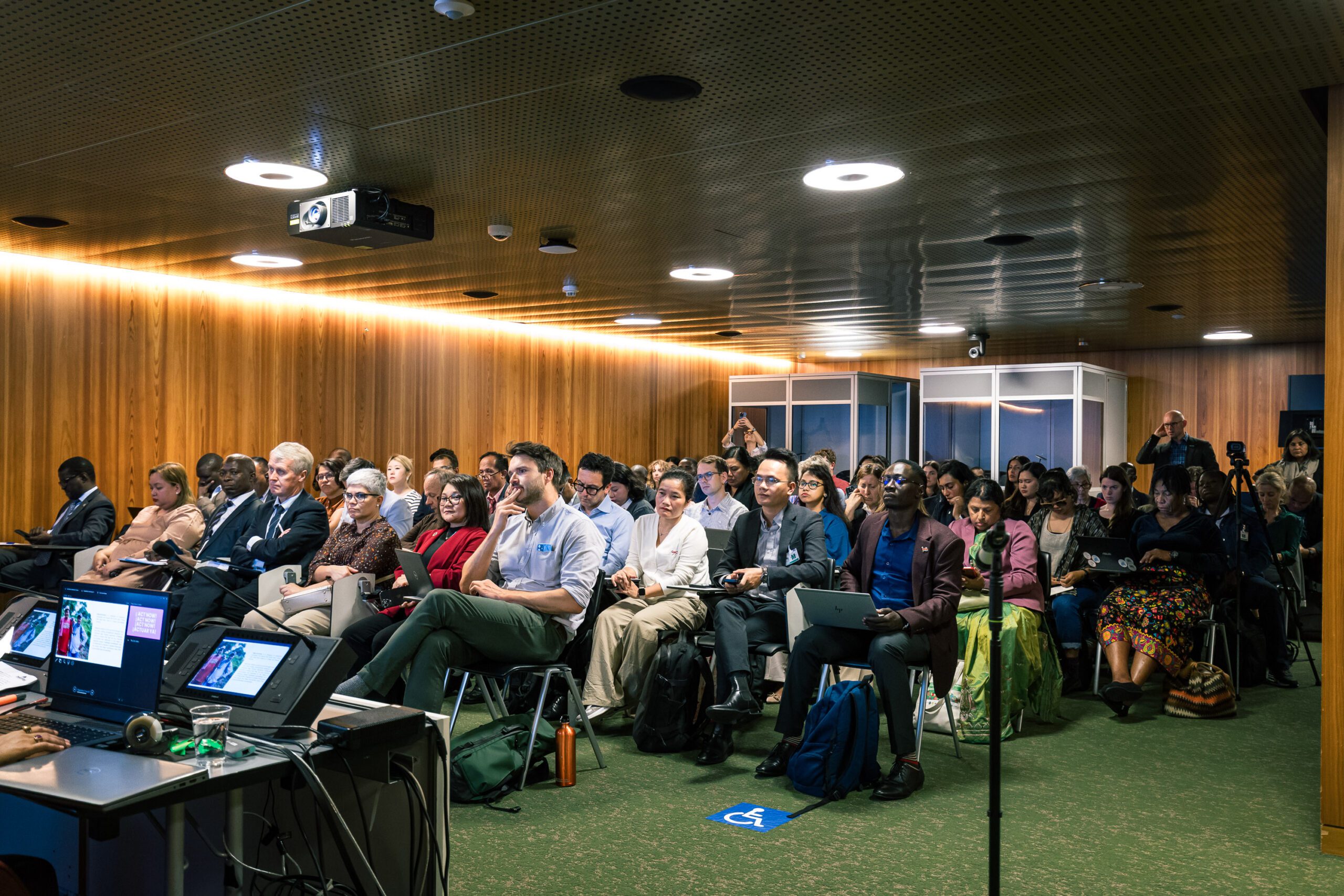When Art Meets Disaster Risk Reduction in Bali
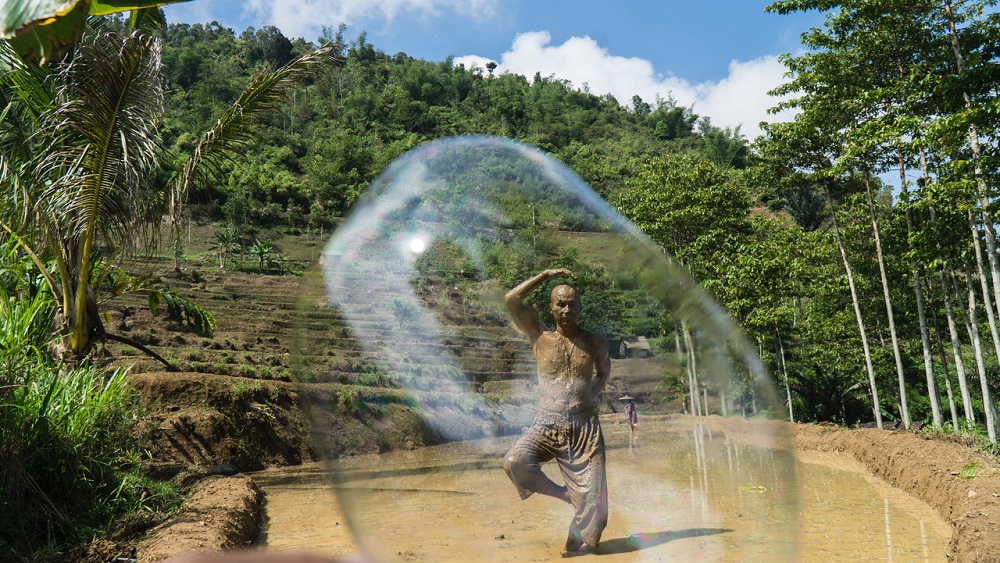
As part of the 2022 Global Platform for Disaster Risk Reduction (GP22), the Platform on Disaster Displacement (PDD) and the Norwegian Refugee Council (NR) partnered with the DISPLACEMENT – Uncertain Journeys art project and its curator Ms. Hannah Entwisle Chapuisat to present an exhibition of contemporary artworks and socially engaged art projects that address disaster displacement risk in local communities. The exhibition complements the conference’s thematic session Strengthening Governance to Reduce Disaster-Related Displacement and other disaster displacement related events throughout the week.
DISPLACEMENT encourages disaster risk reduction (DRR) actors to consider the potential of collaborating with art and cultural actors. Differing in scale and approach, some artworks use strong visual imagery to prompt conversation and exchange to find collective policy solutions to disaster displacement risk. Others seek to inspire personal reflection and empathy about our collectively vulnerability to natural hazards and climate change impacts. Finally, some seek concrete solutions to DRR-related challenges through anticipatory technical solutions that build upon local cultural practices and traditions.
In Bali, DISPLACEMENT highlights how Indonesia’s rich cultural traditions and contemporary art practices have engaged DRR issues. For instance, many credit traditional storytelling practices on Simeulue Island in Aceh with saving the lives of thousands of people in 2004 and 2005 when tsunamis, known locally as “Smong,” struck the coast. Stories passed down through generations warned that one should run to higher ground with the ocean recedes.
Accompanied by daily artist talks with other GP22 delegates at the Innovation Platform, DISPLACEMENT hopes the exhibition will inspire ideas that might not otherwise emerge around a conference table, and that keep the human story at the center of policy discussions.
The exhibition was organized in collaboration with the Anticipation Hub, the Global Network of Civil Society Organisations for Disaster Reduction (GNDR), with support provided by the German Federal Foreign Office, Common Room, the Association for Progressive Communications (APC) and UKAid.
The video below summarizes the overall art project implemented throughout the GP22 in collaboration with NRC, DISPLACEMENT – Uncertain Journeys and artists.
Common Room
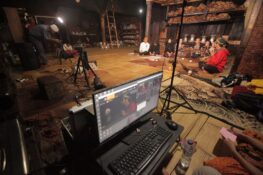 Common Room, based in Bandung, Indonesia, applies artistic strategies to disaster risk reduction in the Cipatagelar indigenous community in rural West Java. The non-profit’s work blends personal and symbolic artworks with multidisciplinary projects that merge art, culture, information communication technology, and digital media.
Common Room, based in Bandung, Indonesia, applies artistic strategies to disaster risk reduction in the Cipatagelar indigenous community in rural West Java. The non-profit’s work blends personal and symbolic artworks with multidisciplinary projects that merge art, culture, information communication technology, and digital media.
In Sawen Lembur, Arum Dayu and Yoyo Yogasmana depict protection rituals that seek to ward off bad spirits from homes and surrounding villages across the Banten Kidul indigenous compound. The School of Community Networks project supports the development of community-based internet infrastructure in remote areas across nine provinces. In Mangrove Hacklab, Common Room plans to tackle tidal floods impacting residents of Lembar Selatan Village, working in collaboration with village leaders as well as regional and local authorities. Proposed activities include developing early warning systems for tidal floods using internet-connected (IoT) sensors and smartphones, and strengthening mangrove conservation efforts through ecotourism and mangrove friendly aquaculture activities for local residents.
Rhino Areifiansyah & Marie Velardi
Indonesian anthropologist Rhino Ariefiansyah and Swiss visual artist Marie Velardi filmed Aléa (Hazard) in Vendée, France four years after the 2010 storm Xynthia struck the coast, killing more than 60 people and causing severe flooding and displacement. The silent video includes subtitles composed from interviews with displaced people, as well as those who refused to move. When the subtitles shift to italics, the artists look to the future to imagine what can be learned from the disaster and how to live with risk and uncertainty. In particular, Ariefiansyah and Velardi propose the creation of a School for Natural Hazards to help French coastal residents re-learn their historical knowledge about how to “read the sea” and cope with natural hazards, an idea inspired by Indonesian field schools for farmers in the 1980s.
Xavier Cortada
Xavier Cortada’s The Underwater attempts to make the invisible visible by mapping the topography of a conceptual coastline to depict South Florida’s vulnerability to sea-level rise. The artist facilitates conversations across the City of Miami with his fellow citizens, combining compelling imagery with technical expertise, to inspire a collective desire for policy solutions. As part of the project, Cortada has facilitated monthly Underwater Homeowners Association (UHOA) meetings bringing together people living at the same elevation, organized a Climate Town Hall open to the public, and held workshops with thousands of local high school students. The artist also distributes yard signs that visualize houses’ current elevation above sea level against the backdrop of his Antarctic Ice Paintings, and maintains an online resource center called the Underwater Intel.
Photos: © Common Room
Cover photo: Selected image from Sawen Lembur (2021) by Arum Dayu with Yoyo Yogasmana
Article photo: Documentation from the Connecting the Unconnected project in Ciptagelar 2021
Download the DISPLACEMENT brochure
